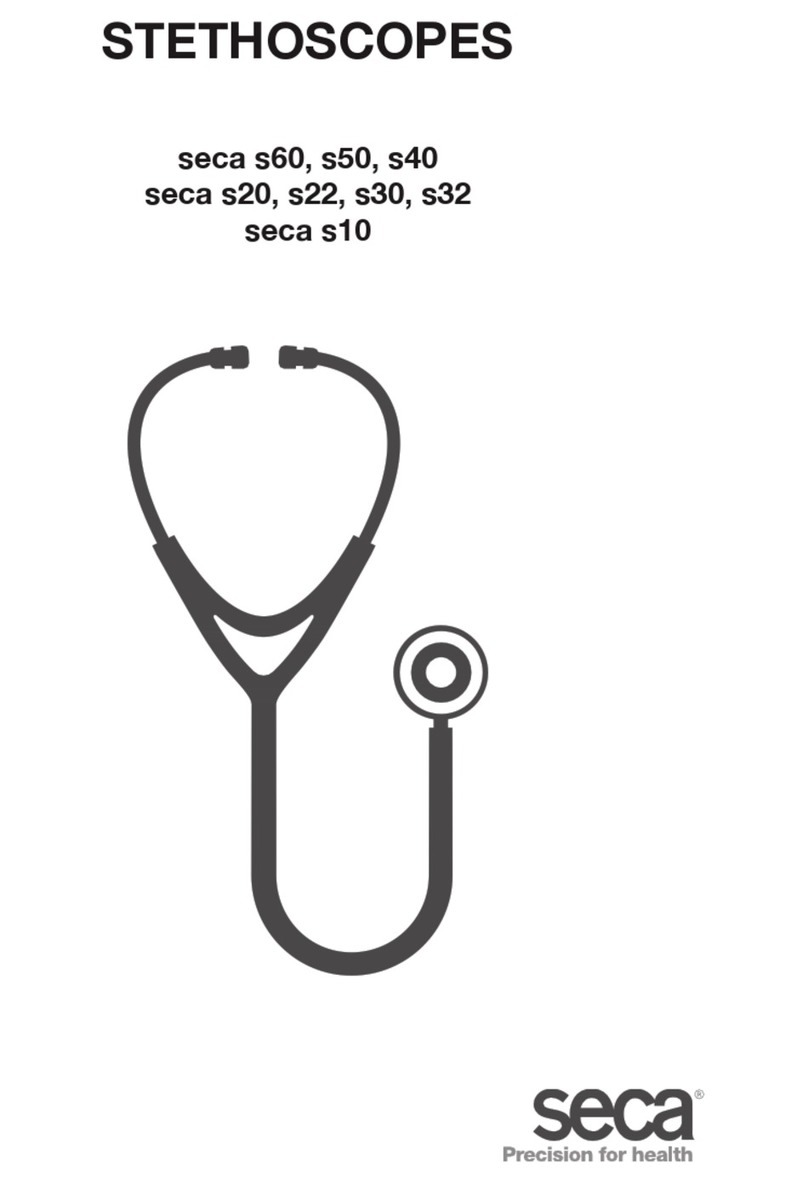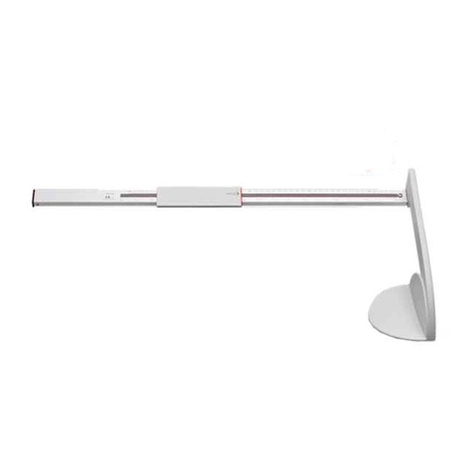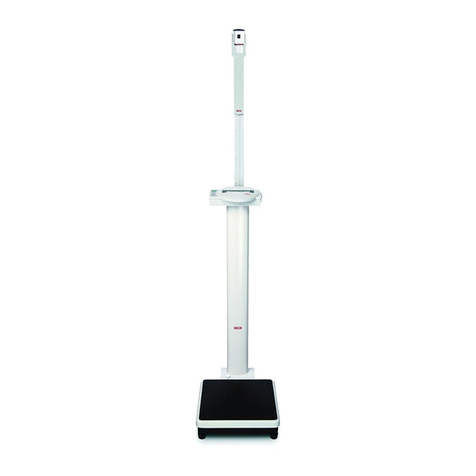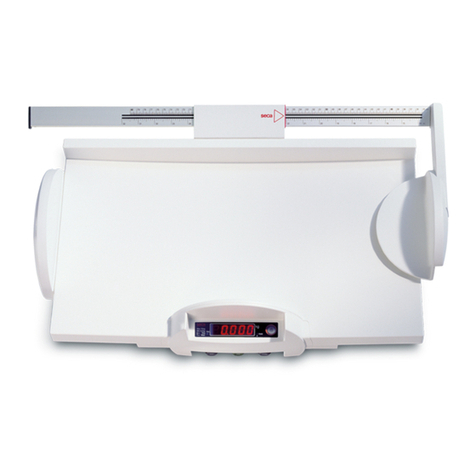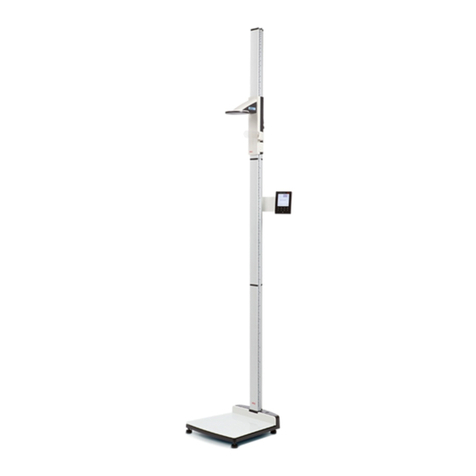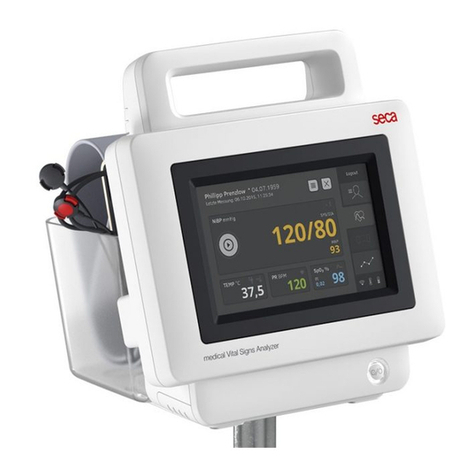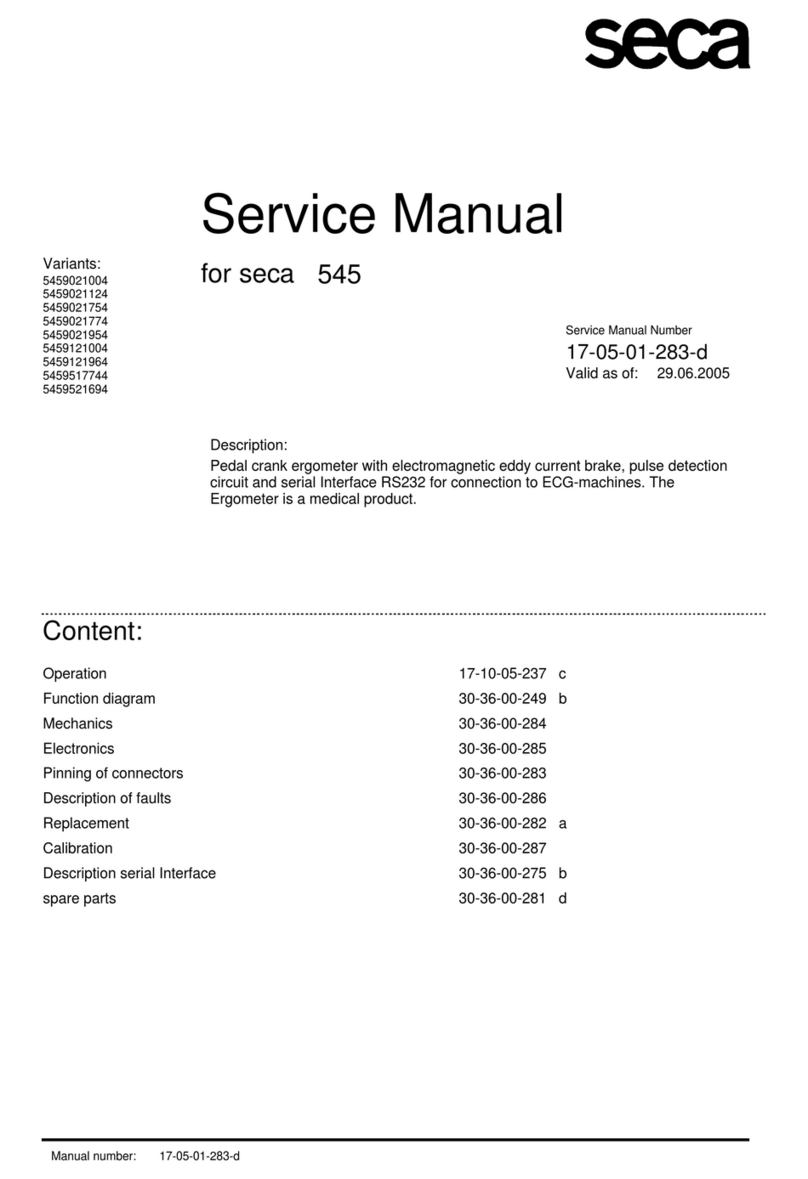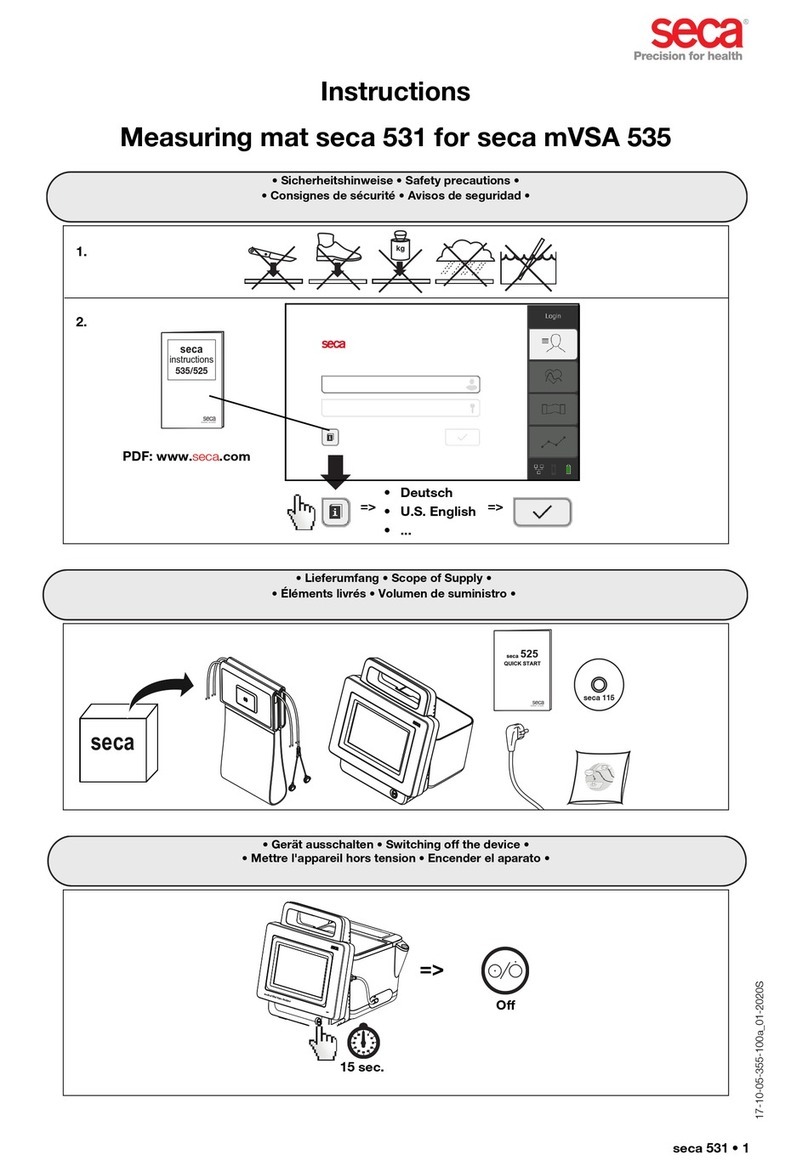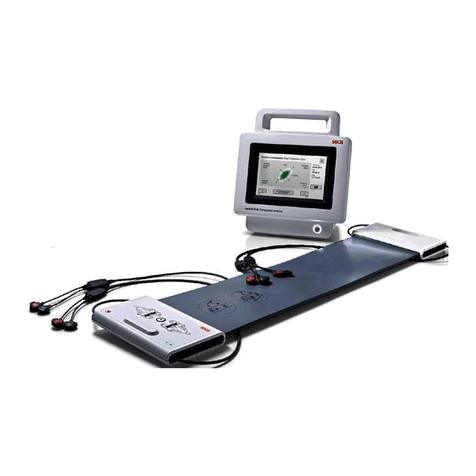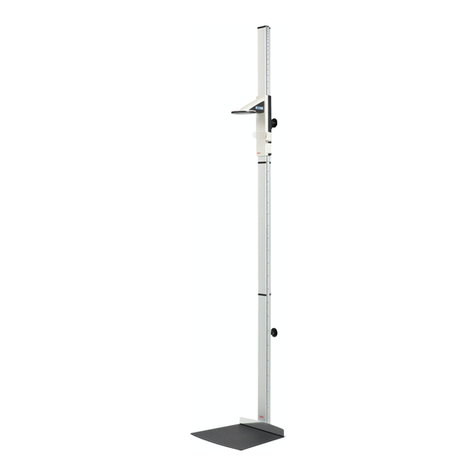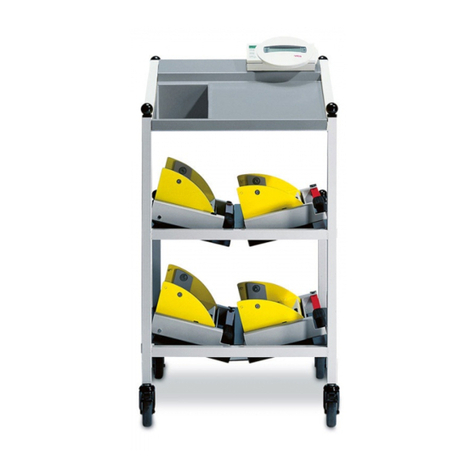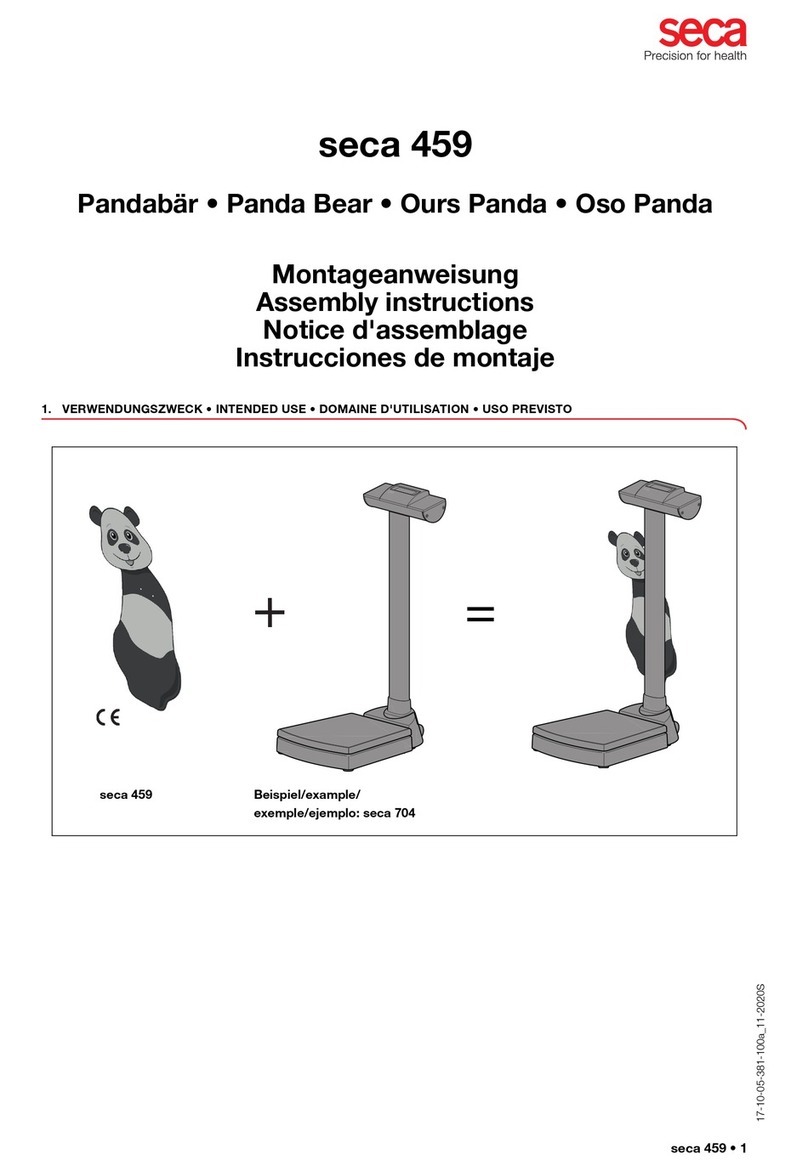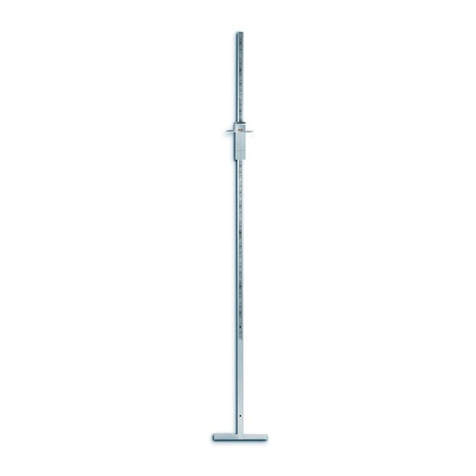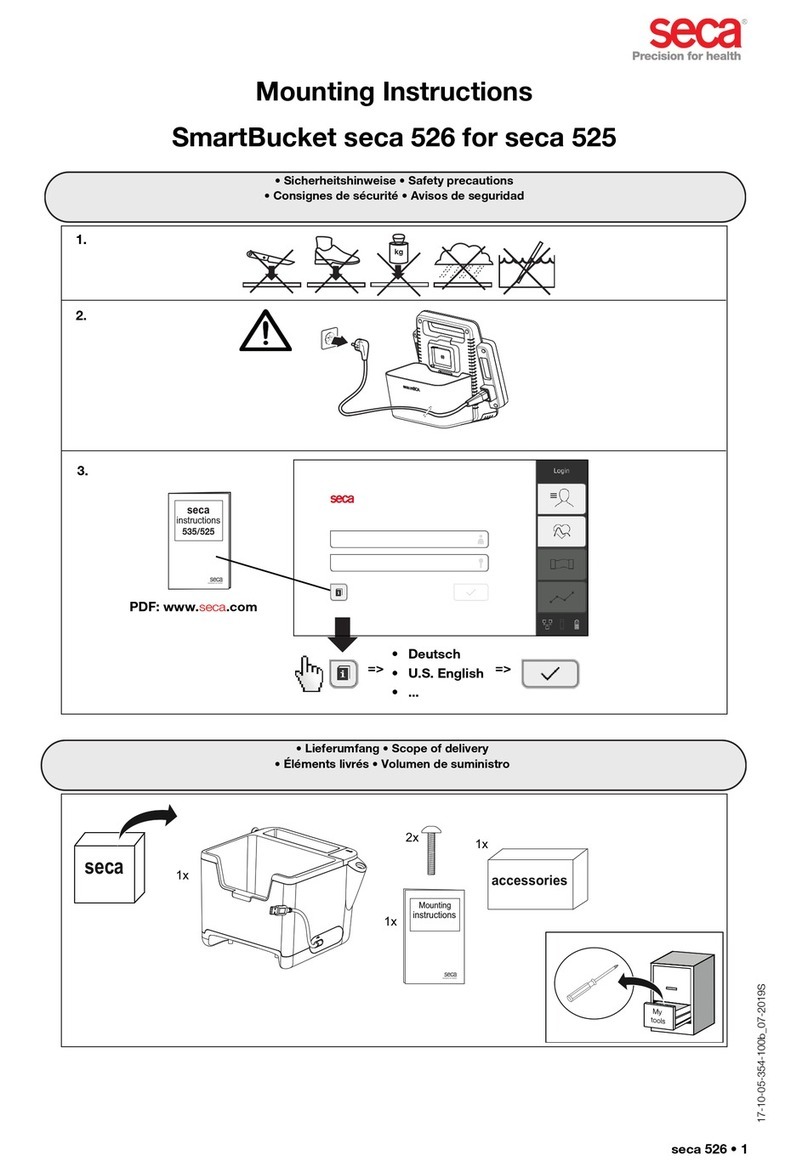
2 •
English
CONTENTS
1. Device description . . . . . . . . . . . . . . . . . . . . . . . . . . . . 3
1.1 Intended use . . . . . . . . . . . . . . . . . . . . . . . . . . . . . 3
1.2 Description of function. . . . . . . . . . . . . . . . . . . . . . 3
Calculating weight and height . . . . . . . . . . . . . . 3
Bioimpedance measurement. . . . . . . . . . . . . . . 3
Administering patient data . . . . . . . . . . . . . . . . . 3
Evaluation . . . . . . . . . . . . . . . . . . . . . . . . . . . . . 3
Administration of user data . . . . . . . . . . . . . . . . 4
Data transmission and network functions . . . . . 4
Compatibility . . . . . . . . . . . . . . . . . . . . . . . . . . . 4
1.3 User qualification . . . . . . . . . . . . . . . . . . . . . . . . . . 4
Administration/network connection . . . . . . . . . . 4
Measuring mode . . . . . . . . . . . . . . . . . . . . . . . . 4
1.4 Contraindications. . . . . . . . . . . . . . . . . . . . . . . . . . 5
2. Safety information . . . . . . . . . . . . . . . . . . . . . . . . . . . . 6
2.1 Safety instructions in these instructions for use . . . 6
2.2 Basic safety instructions . . . . . . . . . . . . . . . . . . . . 6
Handling the device. . . . . . . . . . . . . . . . . . . . . . 6
Preventing electric shock. . . . . . . . . . . . . . . . . . 7
Preventing injuries and infections. . . . . . . . . . . . 7
Preventing device damage . . . . . . . . . . . . . . . . 8
Dealing with measuring results . . . . . . . . . . . . . 8
Dealing with packaging . . . . . . . . . . . . . . . . . . . 9
3. Device overview . . . . . . . . . . . . . . . . . . . . . . . . . . . . . 10
3.1 Controls . . . . . . . . . . . . . . . . . . . . . . . . . . . . . . . 10
3.2 Symbols in the start display . . . . . . . . . . . . . . . . . 12
3.3 Color symbols and other controls . . . . . . . . . . . . 14
3.4 Menu structure . . . . . . . . . . . . . . . . . . . . . . . . . . 16
3.5 Identification on the device and the type plate . . . 17
3.6 Identification on the packaging . . . . . . . . . . . . . . 18
4. Making the device operational . . . . . . . . . . . . . . . . . 19
4.1 Scope of delivery. . . . . . . . . . . . . . . . . . . . . . . . . 19
4.2 Establishing power supply . . . . . . . . . . . . . . . . . . 20
4.3 Setting up the device. . . . . . . . . . . . . . . . . . . . . . 20
4.4 Operating the device in a PC network . . . . . . . . . 21
Connecting the network via Ethernet or
seca 360° wireless network . . . . . . . . . . . . . . . 21
Print . . . . . . . . . . . . . . . . . . . . . . . . . . . . . . . . 22
Indirect connection via USB memory stick. . . . 22
4.5 Operation using a seca 360° stadiometer . . . . . . 23
5. Operating concept . . . . . . . . . . . . . . . . . . . . . . . . . . . 24
5.1 Swiveling the touchscreen display . . . . . . . . . . . . 24
5.2 Switch on device . . . . . . . . . . . . . . . . . . . . . . . . . 24
5.3 Selecting functions . . . . . . . . . . . . . . . . . . . . . . . 24
5.4 Selecting extended functions. . . . . . . . . . . . . . . . 25
5.5 Entering text . . . . . . . . . . . . . . . . . . . . . . . . . . . . 25
5.6 Entering numbers . . . . . . . . . . . . . . . . . . . . . . . . 26
5.7 Measuring procedure . . . . . . . . . . . . . . . . . . . . . 26
5.8 Automatic standby . . . . . . . . . . . . . . . . . . . . . . . 27
5.9 Switching off the device. . . . . . . . . . . . . . . . . . . . 27
6. Configuring the device. . . . . . . . . . . . . . . . . . . . . . . . 28
6.1 Adapting the default module selection for
bioimpedance analysis . . . . . . . . . . . . . . . . . . . . 28
Showing/hiding default module selection. . . . . 28
Creating default module selection . . . . . . . . . . 29
6.2 Administering user accounts and access rights . . 30
6.3 Calling up the Administrator menu. . . . . . . . . . . . 30
6.4 Making default settings . . . . . . . . . . . . . . . . . . . . 32
Setting units of measurement . . . . . . . . . . . . . 32
Making regional settings . . . . . . . . . . . . . . . . . 32
Setting the date and time . . . . . . . . . . . . . . . . 35
Setting display brightness and volume. . . . . . . 36
6.5 Setting up the network . . . . . . . . . . . . . . . . . . . . 36
Requirements . . . . . . . . . . . . . . . . . . . . . . . . . 36
Network services. . . . . . . . . . . . . . . . . . . . . . . 36
Network-dependent functions . . . . . . . . . . . . . 37
Integrate device in an Ethernet network. . . . . . 37
Setting up seca CLS network
(via Ethernet only). . . . . . . . . . . . . . . . . . . . . . . 38
Setting up the seca 360° wireless network . . . 40
Viewing wireless devices . . . . . . . . . . . . . . . . . 42
6.6 System data . . . . . . . . . . . . . . . . . . . . . . . . . . . . 43
Viewing versions . . . . . . . . . . . . . . . . . . . . . . . 43
Making system settings. . . . . . . . . . . . . . . . . . 43
Using service functions . . . . . . . . . . . . . . . . . . 48
6.7 Saving settings . . . . . . . . . . . . . . . . . . . . . . . . . . 50
Applying settings. . . . . . . . . . . . . . . . . . . . . . . 50
Exiting the administrator menu . . . . . . . . . . . . 50
7. Troubleshooting . . . . . . . . . . . . . . . . . . . . . . . . . . . . . 51
7.1 Power supply and display . . . . . . . . . . . . . . . . . . 51
7.2 Height and weight . . . . . . . . . . . . . . . . . . . . . . . . 51
7.3 Bioimpedance analysis . . . . . . . . . . . . . . . . . . . . 52
7.4 Data transmission . . . . . . . . . . . . . . . . . . . . . . . . 53
7.5 Print . . . . . . . . . . . . . . . . . . . . . . . . . . . . . . . . . . 55
8. Optional accessories . . . . . . . . . . . . . . . . . . . . . . . . . 55
9. Spare parts . . . . . . . . . . . . . . . . . . . . . . . . . . . . . . . . . 56
10. Technical information . . . . . . . . . . . . . . . . . . . . . . . 56
10.1 The seca 360° wireless network . . . . . . . . . . . . 56
10.2 Technical modifications . . . . . . . . . . . . . . . . . . . 56
10.3 Additional technical information . . . . . . . . . . . . . 57
11. Disposal. . . . . . . . . . . . . . . . . . . . . . . . . . . . . . . . . . . 57
12. Warranty . . . . . . . . . . . . . . . . . . . . . . . . . . . . . . . . . . 57
13. Declaration of conformity . . . . . . . . . . . . . . . . . . . . 57






